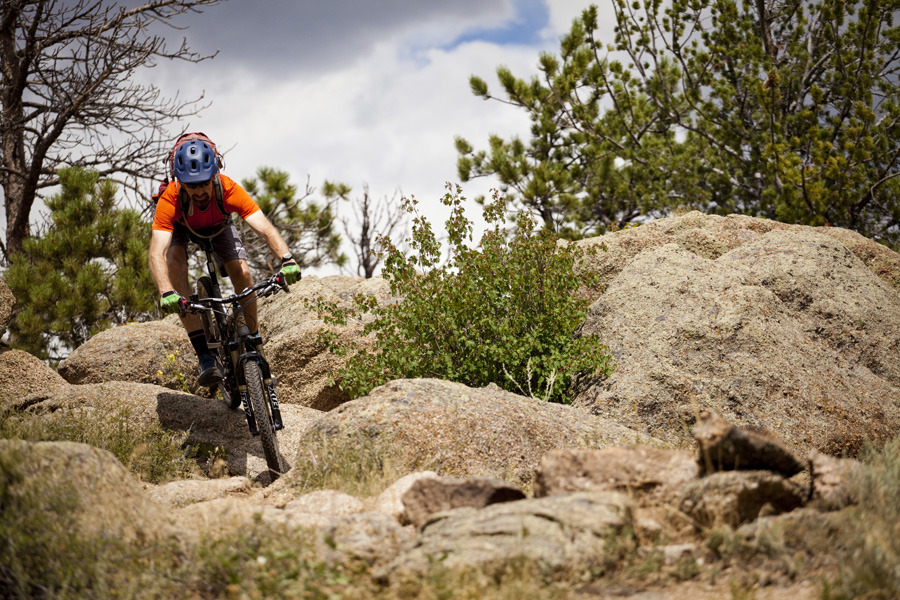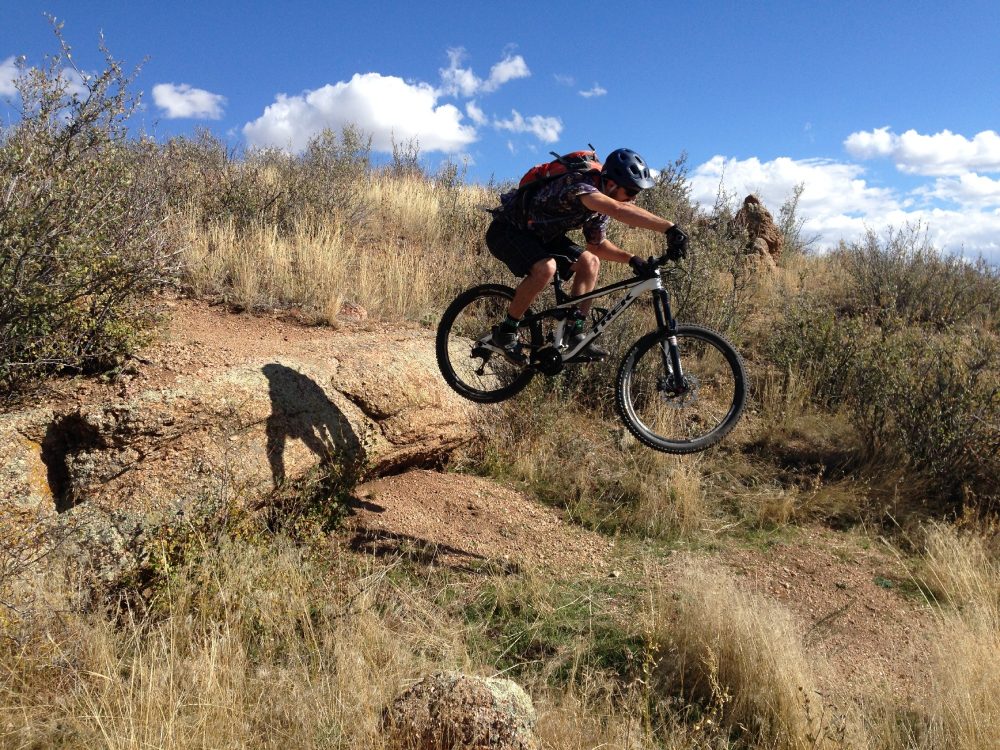How Southeastern Wyoming became an unlikely hotbed for mountain biking
So what if everyone thought Kevin Costner was nuts for plowing over his cornfield to build a baseball diamond—the guy was just obeying divine orders. “If you build it, they will come” has proven to be a handy instruction in the mountain biking world as well, transforming formerly down-on-their-luck places like Oakridge, OR and Fruita, CO into destinations where you can ride sweet trails and contribute to the local economy in the form of pre-ride espresso and post-ride beers.
Wyoming’s state parks might be mountain biking’s next ‘field of dreams;’ there are currently trail-building projects underway at Glendo, Keyhole, and Guernsey State Parks. And the pace at which trails are blooming in the southeastern part of the state is staggering. At Glendo, trail development began in the spring of 2010, and the park now has 45 miles of non-motorized trails with plans to add 15 more miles over the next five years. If it’s impressive that a notoriously cash-strapped state governmental agency (and one in the country’s least populous zip code) has put non-motorized trail construction at the top of its priority list, it’s also a bit bewildering. This part of the state summons images of blustery weather, towering windmills, and hundreds of head of cattle, but hordes of mountain bikers?
A few park superintendents and a keen Planning and Grants manager who loved riding got the wheels rolling toward the creation of the state’s best singletrack.
There’s always a motley crew to thank for bringing biking and its concomitant infrastructure to a new place, but the initial enthusiasm can often be traced to one or two instigators. In the case of the Wyoming State Parks, you’d think we’d have a guy named Curt Gowdy to give the credit to since the park bearing his name inspired the trail-building momentum, but the Wyoming-bred sportscaster died before his eponymous park thundered onto the mountain biking scene. Rather, it was a few park superintendents and a keen Planning and Grants manager who loved riding that got the wheels rolling toward the creation of the state’s best singletrack.
“My Superintendent, Dusty Humphreys, got me into mountain biking in the 90’s at Guernsey State Park,” says current Gowdy Superintendent Bill Conner. “So when I was blessed to get the superintendent position at Curt Gowdy in 2002, there was one section of land that was barely used, and I wanted to build some mountain bike trails.”
Guernsey, which is located 100 miles north of Cheyenne, not far from the Nebraska border, is a showcase of Civilian Conservation Corps’ (CCC) handiwork. The CCC—one of FDR’s New Deal programs—put out-of-work young men between the ages of 17 and 25 to work on public projects. Guernsey was one of the first places where the CCC workers were allowed to perform skilled labor.
Tony Boone, one of the region’s most prolific bike-optimized trail builders, realized quickly that Curt Gowdy would be on the MTB map as soon as its dirt was rideable.
The CCC-built hiking trails endured so well that Bill Conner and Dusty Humphreys started riding them in the 90s, but when Conner embarked on trail building at Curt Gowdy, he sought to improve the riding experience by eliminating the non-rider friendly features present on the CCC trails. In 2005, he went to a State Park conference in Colorado Springs and met a representative from the International Mountain Biking Association (IMBA) who spoke about the concept of building non-motorized trails to be fun and sustainable. Conner left inspired and applied for a grant; the Land and Water Conservation Fund awarded the funds to the park and building began in 2006.
Tony Boone, one of the region’s most prolific bike-optimized trail builders, realized quickly that Curt Gowdy would be on the MTB map as soon as its dirt was rideable. After IMBA did the conceptual layout, Boone and his crew flagged and built about 10 miles of trail in 2006, only having a little bit of fun along the way.
“When we were building it, we were riding it all the time,” Boone said, “thinking, ‘These rocks are badass!’”

Visiting riders will find plenty of granite slabs for which Curt Gowdy has become well known | Photo: Leslie Kehmeier
He describes the park as “topographically blessed,” which, for a trail builder, means that the ingredients (like dirt and decomposed granite) you’re working with are premium, and the kitchen is spotless. For the rider who comes to sample the goods, the result is six-course single track in a three-star setting.
Gowdy is located between Laramie and Cheyenne, in the foothills of the Laramie Mountains, where the Great Plains and the Rocky Mountains shrug at their unlikely meeting. The outcome of this geographical handshake is a landscape that is both rolling and gentle, and also punctuated with sharp granite outcroppings and deeply cut canyons. The elevation ranges from 6,450 feet to over 7,500 feet, which means that sometimes you’re riding over pine needle duff and sometimes you stop to watch the Aspen quake. The trails take full advantage of this diverse landscape, transforming endlessly from fast and buff to steep and slabby.
If you had a weekend at the park—which you should—you could spend all your time in an “expert” play area, honing your hucking, or you could explore the entire 35-mile system, from the gentler relief and reservoir views of the eastern end of the park to the subalpine and slabs of the more mountainous west end. Trails are ranked by difficulty, from beginner (green circle) to expert (black diamond), and good signage helps you know before you go. There are 145 campsites in the park, some requiring reservations and others available for last-minute walk-ups. If sleeping outside isn’t your cup of tea, you can find hotels and motels in both Laramie and Cheyenne, where you’d be remiss not to happen into a cowboy bar before retiring for the evening.

Jumps and drops abound in the Middle Kingdom section of the park. Photo: Brian Smith
The winning combination of inspired planners and managers, talented builders, tireless volunteers, and a topographical Nirvana led visitor numbers at Gowdy to increase from 56,000 in 2006 to over 120,000 in 2013. In 2009, the park became the first (and only) Wyoming trail system to earn “Epic” designation from IMBA. Visitors come from all directions, and some travel a long way to get to the trailhead. Now, with trail-building efforts in other WY State Parks, the once purely Gowdy pilgrimage can become a multi-park road trip. Thank you Wyoming State Parks: You built it, and we’re coming.
Lead photo: Leslie Kehmeier
